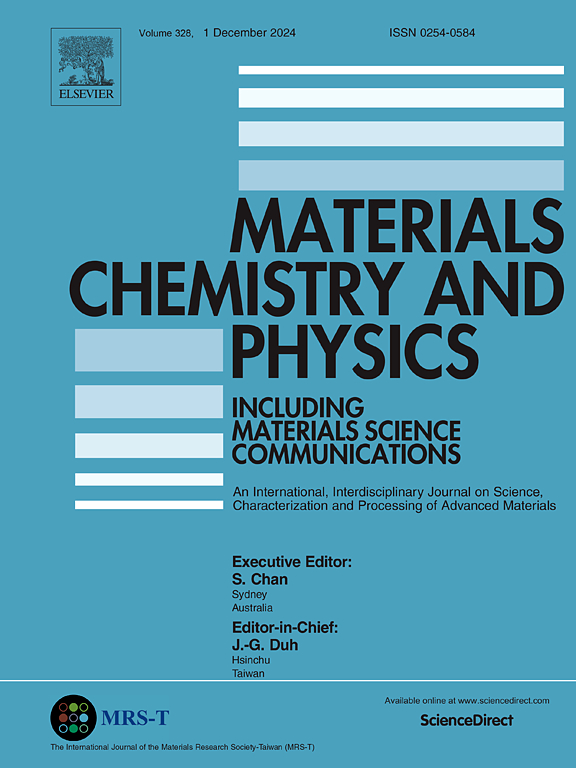从干椰子壳中合成高质量还原氧化石墨烯的环保合成和表征
IF 4.7
3区 材料科学
Q2 MATERIALS SCIENCE, MULTIDISCIPLINARY
引用次数: 0
摘要
本研究采用高温(400°C和600°C)热解碳化技术,以干椰子壳为原料,环保合成了高质量的还原性氧化石墨烯(rGO)。所得材料已被彻底表征,揭示了光学和电学性质。合成的还原氧化石墨烯比表面积为356.9783 m2/g,孔径分布在1.85 ~ 86.71 nm之间,平均孔径为31.76 Å。通过各种分析技术,包括BET分析,XRD,拉曼光谱,XPS, HRTEM, FTIR和UV-Vis NIR光谱,确认了材料的气体吸附和半导体行为等性能。紫外-可见近红外光谱结果表明,随着温度的升高(400℃至600℃),光能带隙从1.95 eV减小到1.53 eV,电导率从289 μS/cm增加到400 μS/cm,高于当代文献报道的值。在高温(600°C)下加热可以产生最高的比表面积和导电性。这些发现表明,从椰子壳中成功合成了高性能的还原氧化石墨烯,在气体传感、生物传感、光电子和半导体技术等各个领域都有很好的应用前景。本文章由计算机程序翻译,如有差异,请以英文原文为准。
Eco-friendly synthesis and characterization of high quality reduced graphene oxide from dry coconut shells
This work presents eco-friendly synthesis of high quality reduced graphene oxide (rGO) from dry coconut shells through pyrolysis carbonization technique by heating at high temperatures (at 400 °C and 600 °C). The resulting material has been thoroughly characterized, revealing optical and electrical properties. The synthesized rGO demonstrates a significant specific surface area of 356.9783 m2/g, featuring a small pore size division between 1.85 to 86.71 nm, with an average pore size of 31.76 Å. The material’s properties like gas adsorption and semiconductor behavior are confirmed through various analytical techniques, including BET analysis, XRD, Raman spectroscopy, XPS, HRTEM, FTIR, and UV–Vis NIR spectroscopy. The UV–Vis NIR spectroscopy results show the optical energy band gap decreasing from 1.95 to 1.53 eV with rising temperature (400 °C to 600 °C), correlating with an increase in electrical conductivity from 289 to 400 S/cm higher than the reported values in contemporary literatures. The heating at high temperature (600 °C) is found to yield the highest specific surface area and electrical conductivity. These findings demonstrate the successful synthesis of high-performance rGO from coconut shells, offering promising applications in various fields including Gas sensing, Biosensing, Optoelectronics and Semiconductor technology.
求助全文
通过发布文献求助,成功后即可免费获取论文全文。
去求助
来源期刊

Materials Chemistry and Physics
工程技术-材料科学:综合
CiteScore
8.70
自引率
4.30%
发文量
1515
审稿时长
69 days
期刊介绍:
Materials Chemistry and Physics is devoted to short communications, full-length research papers and feature articles on interrelationships among structure, properties, processing and performance of materials. The Editors welcome manuscripts on thin films, surface and interface science, materials degradation and reliability, metallurgy, semiconductors and optoelectronic materials, fine ceramics, magnetics, superconductors, specialty polymers, nano-materials and composite materials.
 求助内容:
求助内容: 应助结果提醒方式:
应助结果提醒方式:


